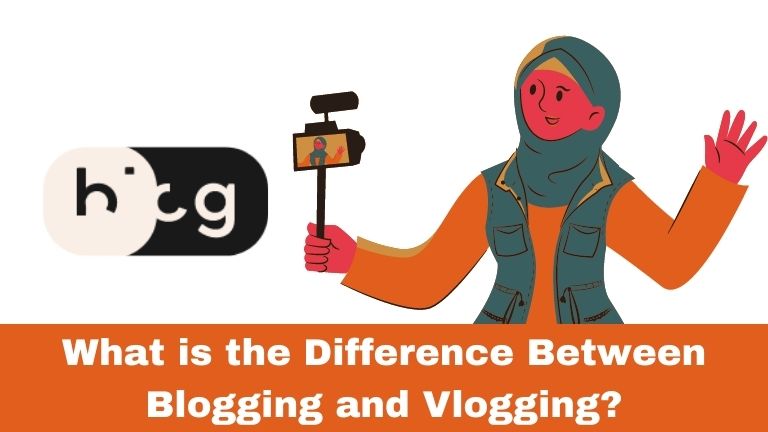Blogging and vlogging are both popular forms of online content creation, but they have some key differences. Blogging is a written form of content, while vlogging is a video form of content.
Blogs are typically written in paragraphs, with images and videos interspersed. Vlogs, on the other hand, are typically shot and edited videos that are uploaded to a video-sharing platform like YouTube.
In this article, we will explore the key differences between blogging and vlogging. We will discuss the different content types, lengths, focuses, and interactions of each format. We will also provide some tips for choosing the right format for your needs.
So, whether you are a seasoned content creator or just getting started, read on to learn more about the difference between blogging and vlogging.
What is the Difference Between Blogging and Vlogging?
Here is a table that summarizes the key differences between blogging and vlogging:
| Feature | Blogging | Vlogging |
|---|---|---|
| Content type | Written | Video |
| Length | Typically longer | Typically shorter |
| Focus | Text | Visuals |
| Interaction | Passive | Interactive |
What is Blogging?
Blogging refers to the act of creating and publishing written content on a website, often referred to as a blog. Bloggers typically share their thoughts, ideas, expertise, or personal experiences on various topics. Blogs are usually composed of articles or posts presented in a chronological order, with the latest content appearing first.
Benefits of Blogging
Blogging offers several advantages. Firstly, it allows individuals to express themselves creatively and share their passions or expertise with a wide audience.
Blogging also provides an opportunity for personal or professional growth, as writers can improve their writing skills and build a strong online presence.
Additionally, blogs can be monetized through advertisements, sponsorships, or product promotions, enabling bloggers to generate income.
How to Start a Blog
Starting a blog requires a few simple steps. First, choose a blogging platform such as WordPress, Blogger, or Medium. Next, select a domain name that reflects your blog’s theme or niche.
Once your blog is set up, begin creating compelling content by researching topics, organizing your ideas, and writing engaging articles. Promoting your blog through social media and search engine optimization (SEO) techniques can help attract readers and increase your blog’s visibility.
What is Vlogging?
Vlogging, short for video blogging, involves creating and sharing video content online. Vloggers use platforms like YouTube, Vimeo, or TikTok to publish their videos. Vlogs can cover a wide range of topics, including lifestyle, travel, beauty, gaming, or tutorials. Vlogging allows content creators to connect with their audience visually and audibly, offering a more immersive and interactive experience compared to traditional blogging.
Advantages of Vlogging
Vlogging offers unique advantages that set it apart from blogging. Firstly, it provides a more personal and authentic connection with the audience. By incorporating facial expressions, body language, and voice, vloggers can establish a stronger rapport with their viewers.
Moreover, vlogging allows for dynamic storytelling through visuals, making it an ideal medium for showcasing travel experiences, product reviews, or instructional content. Vloggers can also monetize their videos through advertisements, brand partnerships, and sponsorships.
How to Start a Vlog
Starting a vlog requires a different set of tools and skills compared to blogging. First, invest in a good-quality camera or smartphone with video recording capabilities. Additionally, consider purchasing a microphone for better audio quality.
Choose a video editing software like Adobe Premiere Pro or iMovie to edit your vlogs. When filming, focus on clear and engaging visuals, speak clearly, and use appropriate lighting.
Finally, upload your videos to a video-sharing platform, optimize the video title and description with relevant keywords, and promote your vlog through social media and other online channels.
Conclusion
In conclusion, we have discussed the key distinctions between blogging and vlogging. Blogging involves written content, whereas vlogging focuses on video content. Blogs tend to be longer and text-oriented, while vlogs are typically shorter and visually-oriented. Additionally, the interaction dynamic differs, as blog readers usually consume content without direct interaction, while vloggers engage with their audience through comments and live streams.
To decide between blogging and vlogging, it is essential to consider your strengths and preferences. If you enjoy writing and feel more comfortable expressing yourself through words, blogging might be the better choice. On the other hand, if you are at ease speaking in front of a camera and prefer visual communication, vlogging may be the more suitable option.
Ultimately, the decision boils down to your personal inclination and what aligns with your communication style and content creation abilities. Whether you choose blogging or vlogging, both platforms offer unique opportunities to share your thoughts, engage with an audience, and showcase your creativity.
If you have any further questions or need assistance, feel free to ask.

